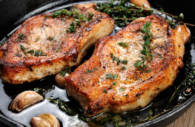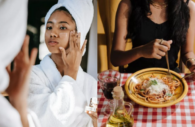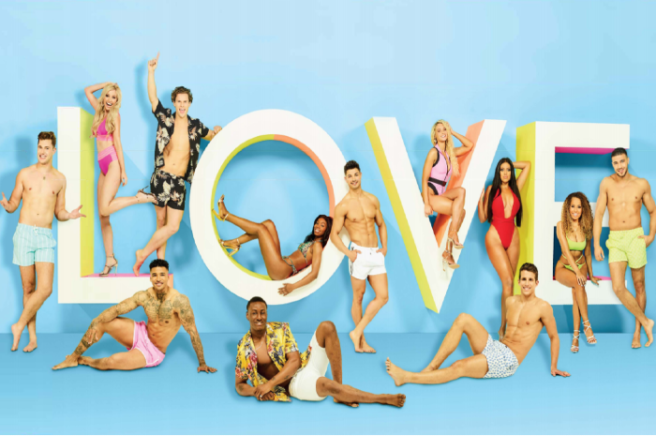
We need to talk about the racial bias and abuse within Love Island
Love Island is back on our screens for the next eight weeks, but there are more than a few issues which need to be addressed.
We're talking racism, we're talking homophobia, we're talking ablism, we're talking sexism, we're talking class, we're talking body diversity…the whole can of worms.
Each of these topics deserve to be tackled individually, no doubt. Bear in mind during this article that, as a Caucasian woman, I cannot speak for the experiences of other ethnicities and it's incredibly important to listen to their personal stories rather than another white woman's take on their livelihoods.
In this article, it's time to talk about the racial bias in the infamous reality television show, which sees Islanders couple up in the hopes of winning the £50,000 cash prize. Does everyone have a fair chance, though?
I only just noticed this..
Series 2 – Malin was picked last…
Series 3 – Marcel was picked last…
Series 4 – Samira was picked last….
Series 5 – Yewande was picked last..
qWHITE interesting that #LoveIsland— Benny James (@Beno_ldn) June 3, 2019
One tweet in particular did the rounds last night and is currently on 37,000 likes and 5.7 thousand reweets for the point it made about former contestants-of-colour.
From Malin and Marcel in series two and three, to Samira in the fourth season, and now Yewande in the latest episode: People-of-colour are always chosen last for the coupling.
These statistics are troubling when we hear how much racial abuse has been sent to Yewande Biala, the Irish candidate who works in cancer research as a scientist.
“Irish accent doesn’t suit her”…I just read about Yewande. Some people with access to app are THICK AS SH*T. She IS Irish, why oh why I wonder doesn’t her accent “suit her” according to this dummy #LoveIsland
— Clara Amfo (@claraamfo) June 3, 2019
Members of the public are literally questioning her nationality despite the fact she has an Irish accent and refers to herself as Irish, and trolls persistently send abuse her way online.
Former Love Island contestant Samira Mighty has now expressed her fear that Yewande will experience the same micro-aggressions and racism as what she was subjected to last season.
She ultimately failed to find love on the show, with the male contestants evidently not finding her attractive. She left the show after a failed coupling with Frankie Foster, but is now speaking out.
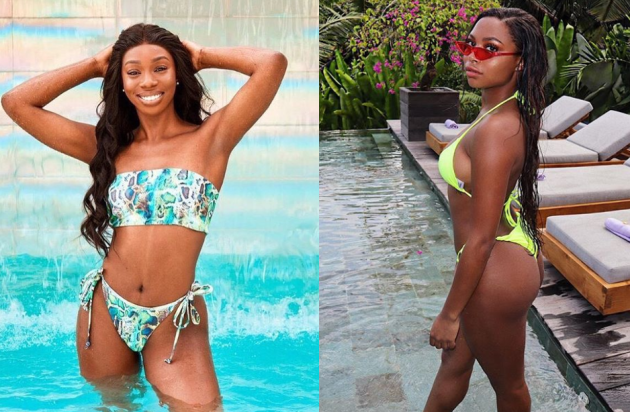
"I feel like there has been so many comparisons between the two of us," she told Metro.co.uk. "The only thing that is similar – it’s not even the colour of our skin – it’s that she is a shade of brown.
"I was trending on Twitter when the line-up came out because of the comparisons. I’m different from her. I’m a theatrical person and she’s a scientist. I think our personalities are different. You can even see it in the first introduction video."
23-year-old Yewande is of Nigerian descent, and has faced criticism online for her choice of men and even her preference for wearing a wig instead of a weave. The standards aren't the same for Caucasian contestants.
Samira also expressed frustration about the pressure for people-of-colour in the villa to choose each other as a couple, such as Sherif and Yewande:
"If Sherif does pick her, people are going to say “Oh okay, there is a black couple” and then it’s going to be cliche. It’s just weird. Everyone chill out. It’s now 2019, we should be able to do whatever we want."
Another ex-Islander, Marcel Somerville, has bemoaned the racial bias in the show after the contestants coupled up, and Yewande was picked last.
This is mad!!!! #LoveIsland flash backs! Black guy, black girl and mixed race guy all left unpicked. Mad!!!
— Marcel Somerville (@marcel_rockyb) June 3, 2019
"Love Island flashbacks," he tweeted. "Black guy, black girl and mixed race guy all left unpicked. Mad!!!" the former Blazin' Squad member wrote,
None of the female contestants stepped forward to indicate their attraction to him back in 2017 while he was in the competition.
This year, newbies Yewande Biala, Sherif Lanre and Michael Griffiths were all sidelined during the first episode, with Scottish contestant Anton Danyluk causing trouble already.
Before the start of this year's series, fans of the show asked ITV to remove Danyluk after an image of him wearing blackface makeup was discovered from six years ago.
@LoveIsland @ITV Anton Danyluk in blackface. Do you find this acceptable? Where was the research on this guy? pic.twitter.com/YlRthGwqB3
— (@TheMarigxld) June 2, 2019
Somerville explained the deeply offensive nature of blackface on his Instagram story, explaining that it "invokes a racist and painful history". Blackface only conceals racism, and yet ITV allowed him to stay on the show.
Last year, Samira was the first woman-of-colour to take part in the show's history, and only one man out of sixteen in the villa were interested in her. A gorgeous West End performer, who boys aren't attracted to? What?
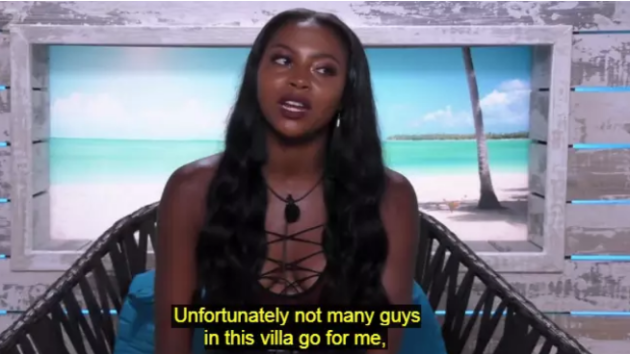
In Samira's time in the villa, Megan Barton-Hanson (the blonde and slim contestant) was referred to as “everyone's type on paper”. It seems that Lucie Donlon, the blonde, slim surfer model, is this year's Megan.
Anton and Joe are already vying to win the heart of the 21-year-old, with Anton seeking to ditch Amy (another slim, blonde contestant) who he's been paired up with presumably very soon.
Is it just micro-aggressions, or are narrow-minded Eurocentric ideas of beauty unavoidable in this show?
Sorry Caroline, the show could stand to have some more diversity. It’s hard for slim, white, straight people to relate to this sometimes. I understand that. You can’t begin to understand erasure because you’re constantly represented. The show would be even better with diversity. https://t.co/pXgZZJr3om
— Jameela Jamil (@jameelajamil) June 1, 2019
From a huge lack of body diversity as well as racial, the reality show is catering for a miniscule amount of the population when it comes to representation.
It's easy to dismiss it as just car-crash tv, but millions of people watch Love Island, and seeing the same type of beauty ideal over and over again is disturbingly damaging.
Jameela Jamil opened up on Twitter about her sadness and anger at the lack of body types represented by the show, whose bosses claim it's because they want the contestants to be "attracted to one another."
How much more careful and polite do I have to be to be able to partake in discourse with white women without getting accused of attacking? I already have to respond to them treading on *eggshells* because of the aggression I am labeled with. pic.twitter.com/msPwFcJitS
— Jameela Jamil (@jameelajamil) June 2, 2019
Jamil and the show's host, Caroline Flack, disagreed on their stances about diversity, with news websites painting Jamil as angry and irrational.
In reality, she was just trying to express concern for under-represented body types, ethnicities, gender and abilities.
The show is undoubtedly telling us that only slim, toned, blonde, white, big-breasted women are beautiful enough to catch a man, and only tall, white men with bronzed abs are good enough to be deemed attractive for women.
Stereotypes and tropes surrounding people-of-colour are undoubtedly present, such as Jamil's experience of being the 'angry brown woman'.
EXCLUSIVE: As a black woman, Yewande Biala, 23, says she had reservations about joining the ITV show after treatment of Samira Mighty…https://t.co/bauqyOhUIb
— Networkofnews UK (@NetworkofnewsUK) June 1, 2019
However, it's women-of-colour that appear to be experiencing the most difficulties.
Valerie Ross of Scientific American wrote about the non-verbal behaviour towards reality tv stars of different races affecting the viewers' prejudice, and her data is overwhelming.
On-screen body language towards people-of-colour can increase unconscious prejudice in viewers, according to Tufts University research.
Esteemed journalist and researcher Cheryl Thompson has also written about the portrayal of black women on reality tv, pointing out three key tropes; the 'Mammy', the 'Jezebel' and the 'Sapphire'.
Interesting article on the current racial stereotype that exists: 'The Angry Black Woman'. http://t.co/1xHu8IJiu9 pic.twitter.com/sotIwXoE5j
— No Colour Bar (@nocolourbar) August 25, 2015
Three racial stereotypes of black womanhood which came to light at various historical moments in Western media culture.
The 'Mammy' has links with servitude and the trademark subservient, mothering figure. The 'Jezebel', born out of chattel slavery, was seen as a sexually depraved, immoral and lascivious black woman. The 'Sapphire' was born on television; angry, emasculating and loud black women. Recognise the signs?
Serena Williams was cast as the racist “angry black woman” trope in headlines and debates across the world when she spoke out against an umpire for discrimination. pic.twitter.com/yjFtfHPGVG
— HuffPost (@HuffPost) September 11, 2018
Lack of representation on television can be seen outside of the reality genre, but the experiences of Love Islanders-of-colour speaks for itself. Everything is trying to tell them that they don't fit the ideal of beauty, just like the lack of ethnicity on runways, ad campaigns and film.
Serena Williams could never get the amount of sponsorships in fashion as her blonde, slim tennis players, who weren't even close to her talent. Naomi Campbell and Tyra Banks revolutionised modelling for black women, but experienced immense difficulties in the process. Black women still rarely get cast in lead roles in film, theatre and television.
What does this tell you about who the public want to see on their screens? Not to mention the lack of care they give towards the mental health of Islanders. The damage which a lack of body diversity and ethnicities does to viewers is undeniable, if you don't see yourself then you assume you aren't enough. You would feel invisible.
One argument I have heard for the lack of diversity is that 'token' candidates such as a plus-sized Islander or woman-of-colour, face a barrage of abuse online as they are clearly the lone representatives.
It's important to take their mental health into account, can they handle this level of online racial or body-orientated abuse? The fact that they have to choose between being represented but abused as a result or not seeing themselves on a screen at all is depressing and unfair.
Yet the less the public see of other races, genders, classes, body types and abilities, the more they will misunderstand them and hold high levels of ignorance. Ignorance leads to consequences.
Feature image: ITV

